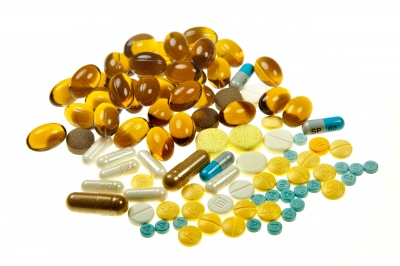
Vitamin D is a fat-soluble vitamin that is the third most popular supplement in America today and one of Consumer Reports “11 supplements to consider.”* There are two major forms of vitamin D; D2 (ergocalciferol) and D3 (cholecalciferol). Both vitamin D2 and D3 appear to be absorbed with equal efficiency and, at moderate doses, are equally able to raise the biologically active form of vitamin D – the clinical measure of vitamin D status.
Vitamin D2 (ergocalciferol) is made by the conversion of a sterol found in plants and yeast and is used in some dietary supplements.
Vitamin D3 is produced naturally in human skin exposed to ultraviolet B light (UVB) and occurs in some animal products, such as cod liver oil, and, in smaller amounts, in other fatty fish such as herrings, mackerel, sardines, and tuna. Vitamin D3 is the most common form used in dietary supplements and is the form generally used to fortify foods such as milk (which naturally contains a small amount of vitamin D3).
Many people are deficient in vitamin D, which partly explains the growth in its supplementation use, especially those who are over 60, live at northern latitudes, have darker skin, or rarely spend time outside. Research supports common sense in that residents of the northern U.S. and Canada report significantly lower Vitamin D blood levels in the winter. Recent studies show that many young people also have low blood levels of vitamin D and that reduced vitamin D levels may be associated with being overweight.
Vitamin D: Claims and Purported Use
The body of research on vitamin D emphasizes its partnership with calcium and phosphorus. By regulating their levels of absorption in the body, vitamin D enhances bone strength. Taken with calcium, vitamin D can help decrease post-menopausal bone loss and prevent osteoporosis (loss of bone density), as well as, improve tooth retention in the elderly. In girls ages 9 to 13, regular supplementation with calcium and vitamin D has been shown to significantly increase bone density and bone strength (measured in arms and legs) compared to a placebo. Additionally, vitamin D treats and prevents rickets in children and osteomalacia (bone softening) in adults. Given to breast-fed infants, vitamin D may help increase bone density.
Newer studies have evaluated vitamin D’s potential to reduce the risk of everything from some common cancers and multiple sclerosis to diabetes, hypertension (high blood pressure), and age-related muscle weakness. A relatively new meta-analysis (combined results of several studies) revealed that people taking vitamin D supplements had a 7% reduction in total mortality rates (number of deaths in a population). With concerns of sun exposure’s link to skin cancer, more people are seeking supplements to improve their vitamin D levels. The following vitamin D products listed below passed independent testing and offer the best value.
Pick Your Preference
Adults
Source Naturals Vitamin D-3 liquid drops – ideal for folks who want to easily adjust the desired amount at the lowest price.
Twin Lab D-3 Dots – small dissolvable tablets
Simply Right Vitamin D-3 – softgel
Children
Carlson Super Daily D-3 for Kids – the liquid form makes it easy for the parents to adjust the amount provided.
Selected Potential Side Effects
Extremely large amounts might cause weakness, fatigue, headache, and nausea, though side effects are rare.
Selected Drug Interactions
Might reduce the effectiveness of some medications, such as atorvastatin (Lipitor), other heart medications, birth control pills, HIV/AIDS drugs.
Suggested Dosage
Vitamin D is measured as micrograms of cholecalciferol or in International Units (IUs) of vitamin D activity. One microgram equals 40 IU. The RDAs for vitamin D intake are based on amounts required for bone health.
Infants up to 1 year – AI is 400 IU (only if infant is not getting sufficient sunlight exposure)
Ages 1-70 years – RDA is 600 IU
Ages 71+ – RDA is 800 IU
Infants up to 6 months – UL is 1,000 IU
Infants 6 to 12 months – UL is 1,500 IU
Ages 1-3 years – UL is 2,500 IU
Ages 4-8 years – UL is 3,000 IU
Ages 9+ – UL is 4,000
Reference Guide for Tested and True Dietary Supplements
Tested and True: Multivitamins
Tested and True: Coenzyme Q10 (CoQ-10)
Tested and True: Glucosamine and Chondroitin
Tested and True: Muscle Enhancers – Creatine
Tested and True: Muscle Enhancers – Branched Chain Amino Acids (BCAAs)
Tested and True: Nutrition Bars
Tested and True: Nutrition Drinks & Powders
Tested and True: Weight Loss Accelerators and Appetite Controllers
Tested and True: Mood Booster SAM-e
Tested and True: Mood Booster St. Johns’ Wort
Not Yet a subscriber?
Sign-up Free Today
&
Get a Free Gift
Free Real Food Therapy Guide
*reference: Consumer Reports Health




